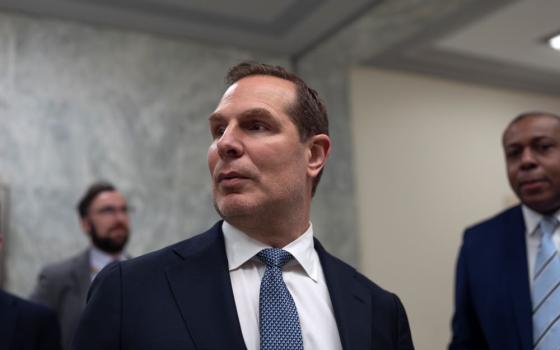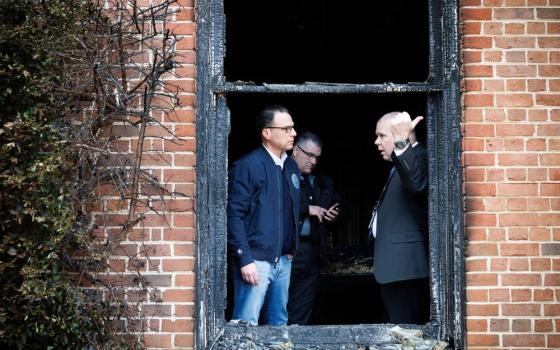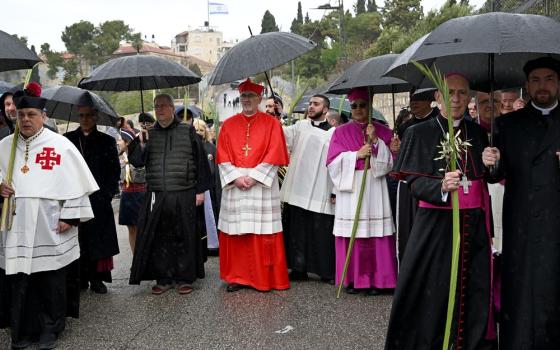The past two days, I have been examining Todd Scribner’s book A Partisan Church: American Catholicism & the Rise of Neo-Conservative Catholics. You can find part 1 here and part 2 here. Today, I shall conclude this review. It made sense to me to go into detail in examining the first two chapters, not only to highlight how the story begins, but to show how Scribner deftly handles his subject. Today, I will give a briefer account of the other chapters that make up this fine book.
Scribner looks at the ways the three neo-conservatives, Michael Novak, Richard Neuhaus and George Weigel, shift in the 1970s. I had not realized that both Novak and Neuhaus were profoundly ambivalent on the issue of abortion when Roe v. Wade was first decided, unsure whether or not a legal prohibition on abortion was a good idea. Neuhaus, who was not yet a Catholic, argued that the best way to avoid abortions was “through effective family planning and wider use of contraception” while examining the socioeconomic conditions that often coerce women into procuring an abortion. Novak evidenced a similar ambivalence about Alexander Solzhenitsyn’s 1978 address at Harvard. Scribner details the influence of pacifist Robert Pickus on George Weigel’s writings about war and peace, which was Weigel’s principal concern in these years. In this chapter of the book, we see the three men wrestling with ideas, their views were not yet so binary, so partisan.
Then came Reagan, Pope John Paul II and the U.S. bishops’s twin pastoral letters on war and peace and the economy. Novak was at the heart of the opposition to the pastoral letters from the bishops, with Weigel joining the criticisms. Novak was, as Scribner says, so presumptuous that he asked the bishops to append his critique to their letter on the economy. Talk about a dual magisterium! But, the most interesting development at this time was the perception by the neo-conservatives of different points of view being expressed at the Vatican from what were emanating from the USCCB. Scribner identifies a “strategy of triangulation” emerging. “Through this strategy the neoconservative Catholics would publicly stake out a position on a given issue, proceed to argue that their position was more consistent with papal teaching, and then pit the latter teaching against that of the bishops,” Scribner writes. This is undoubtedly what happened and it points to one of the most distinctive facts about the Catholic neo-cons in the Reagan years and subsequently: They were quite willing to attack the bonds of unity within the Church when it suits their political purposes. They were not Catholics first, and political analysts and players second. Politics came first. It is my profound hope that liberal Catholics will consult this history and avoid the temptation to mimic it now that Pope Francis is guiding the ship.
It should not surprise that these late twentieth century Americanists objected to the U.S. bishops when the latter voiced their opposition to the Reagan administration’s policies in Latin America and, as well, to the emergence of liberation theology. The bishops and the neo-cons started from different premises about the roots of the conflicts in Latin America and so they reached different conclusions. The bishops, who actually knew something about the situation, understood that systemic injustices and poverty were the root of the problem. The neo-cons viewed the conflict in terms of East-West rivalry and thought the bishops underestimated the Soviet threat. Scribner details these debates with aplomb.
The most interesting part of the neo-conservative critique of liberation theology was not economic but ecclesiological. “Neuhaus granted what was in effect an inevitable consequence of theology, that there is a tendency to compartmentalize the Christian message in the context of a given culture or historical period,” Scribner writes. “There is always ‘a degree of inevitability in our tendency to take the gospel culturally captive.’” Gustavo Guttierez, the father of liberation theology, in Neuhaus’ reading, had become “so mired in the parochial conditions in Latin America that he distorted the universal claims of Christianity that would otherwise function as a counterbalance to these ‘captivities of Jesus.’” This is more than a little ironic coming from the man who got his start arguing for the central role of Christianity in the shaping of American political culture. It also shows the degree to which Neuhaus misunderstood the entrenched Catholic culture of Latin America, which was not a bad thing even those such entrenchments can be fraught with temptations, even Constantinian temptations. Still, a faith that does not beget culture is a sterile faith and who should have recognized this better than Neuhaus?
The final chapter deals with the ecclesiological criticisms of the neo-cons against the U.S. bishops of the 1980s. This is also Scribner’s most distinctive contribution to the literature because, too often, this aspect of the emergence of neo-conservative Catholic thought is overlooked. The neo-cons diagnosed three shifts in the post-conciliar era that bothered them. First, they argued the post-conciliar Church “had become preoccupied with political issues, a tendency that they claimed was the direct result of the ‘loss of the transcendent’ among many in the leadership of the Church.” Second, the Church was forming a clergy that was so obsessed with politics, confusion about the roles of clergy and laity had increased. Finally, the neo-conservatives fretted that the clergy had chosen sides in a political debate. Weigel wrote that the Church was now in danger of becoming “a pathetic appendage to partisanships already well established.” Irony of ironies. I do not recall Mr. Weigel voicing such concerns recently, as the USCCB has lined up more clearly with the partisanship Weigel makes his own.
There is much to be said about the Church understanding, at all times, that it is not one political lobbyist amongst others. But, I do not think many labor under that misapprehension. Most lobbyists do not articulate rationales for their policy preferences in moral terms. Few lobbyists advocate for the poor and the marginalized. And, the bishops were always clear that when speaking at the level of principles, their teaching had a greater degree of moral certitude than when they applied those principles to specific policies. They recognized the importance of prudential judgment. What they did not do, and what it is clear the neo-cons wanted them to do, is turn prudential judgment into a get-out-of-jail-free card for Republican politicians opposed to Catholic Social Teaching.
And here is where the rubber hits the road. The neo-conservative Catholics, in their better moments, raised important and interesting issues. They were not unserious, at least not in the 1970s and 1980s, which is the time frame for Scribner’s book. But, their subsequent activities betray them. They were all too happy to make excuses for the Iraq War. They were all too happy to see the Church lead the fight against same sex rights. When the Church’s teaching lined up with their politics, the neo-conservative fears about a “Constantinian temptation” evaporated. At the end of this book, three thoughts stand out. The first is that Scribner will produce a sequel detailing the hypocrisy at which these neo-cons became expert. The second is yet harsher. While the U.S. bishops wrestled with the implications of Catholic Social Teaching, the neo-conservatives tried to ignore those implications or hijack that teaching, to suit their own ends. The third is that all their efforts have come to naught. Novak’s writings embody the most strident defense of the modern economic system Pope Francis denounces. Neuhaus has gone to God but his journal, First Things, has become the house organ for opposition to Francis. And, Weigel, deprived of the influence he had with Pope John Paul II, first during Pope Benedict’s tenure and now even more with Pope Francis, is becoming an almost tragic figure, his analysis bordering on the comic, his prognostications wildly off the mark. In the end, Scribner’s book is a sad tale, how bright men who once asked interesting questions succumbed to the very urges they criticized in others. It turns out that they were in line at the Catholic cafeteria too.




